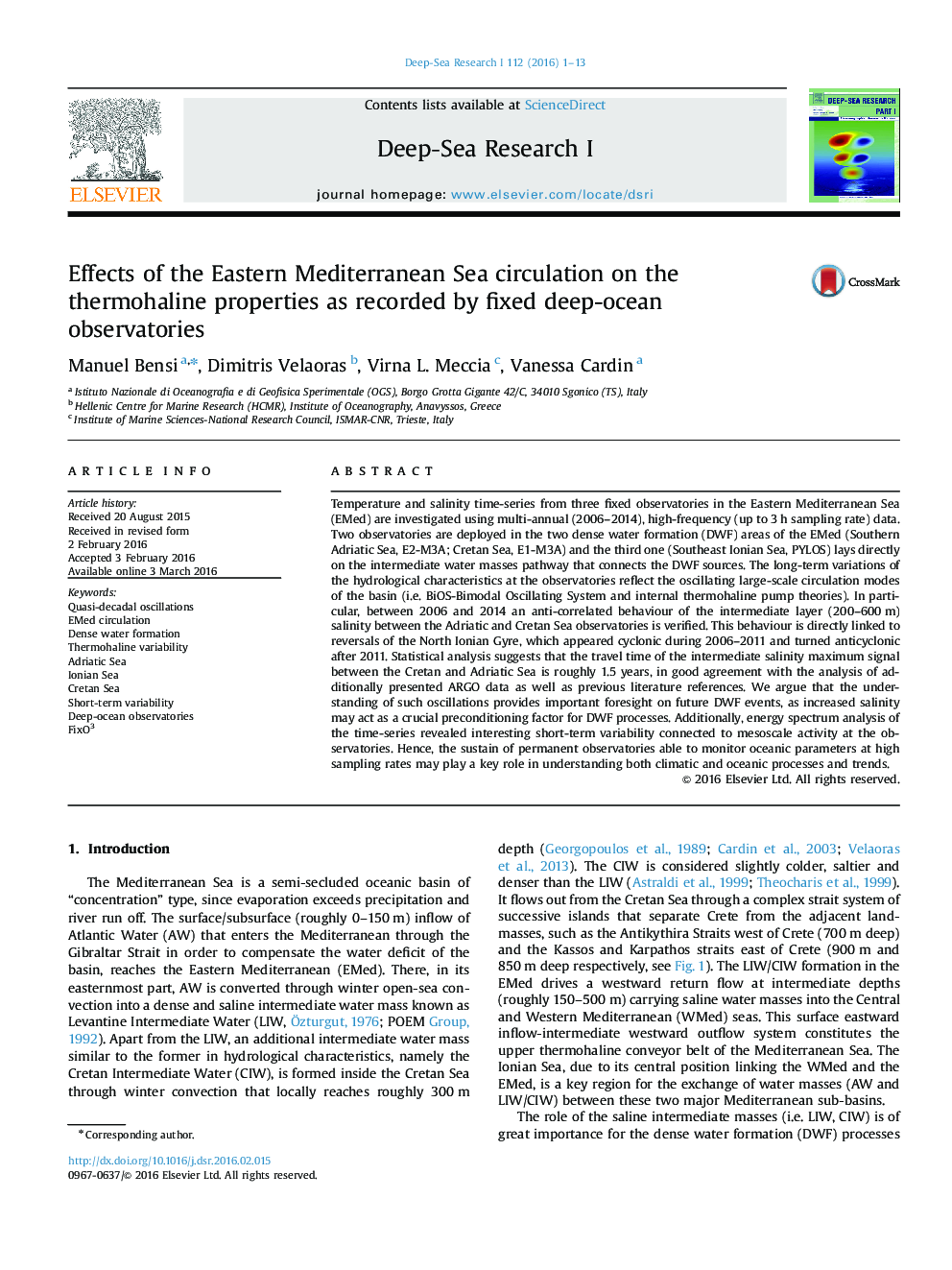| کد مقاله | کد نشریه | سال انتشار | مقاله انگلیسی | نسخه تمام متن |
|---|---|---|---|---|
| 4534387 | 1626318 | 2016 | 13 صفحه PDF | دانلود رایگان |
• The effects of the North Ionian Gyre reversals seen through fixed deep-ocean sites.
• The anti-correlated behaviour of the Adriatic and Cretan Seas is presented.
• We calculated the travel time for the LIW/CIW from the Cretan to the Adriatic Sea.
• The wavelet approach explains the short-term variability at fixed observatories.
Temperature and salinity time-series from three fixed observatories in the Eastern Mediterranean Sea (EMed) are investigated using multi-annual (2006–2014), high-frequency (up to 3 h sampling rate) data. Two observatories are deployed in the two dense water formation (DWF) areas of the EMed (Southern Adriatic Sea, E2-M3A; Cretan Sea, E1-M3A) and the third one (Southeast Ionian Sea, PYLOS) lays directly on the intermediate water masses pathway that connects the DWF sources. The long-term variations of the hydrological characteristics at the observatories reflect the oscillating large-scale circulation modes of the basin (i.e. BiOS-Bimodal Oscillating System and internal thermohaline pump theories). In particular, between 2006 and 2014 an anti-correlated behaviour of the intermediate layer (200–600 m) salinity between the Adriatic and Cretan Sea observatories is verified. This behaviour is directly linked to reversals of the North Ionian Gyre, which appeared cyclonic during 2006–2011 and turned anticyclonic after 2011. Statistical analysis suggests that the travel time of the intermediate salinity maximum signal between the Cretan and Adriatic Sea is roughly 1.5 years, in good agreement with the analysis of additionally presented ARGO data as well as previous literature references. We argue that the understanding of such oscillations provides important foresight on future DWF events, as increased salinity may act as a crucial preconditioning factor for DWF processes. Additionally, energy spectrum analysis of the time-series revealed interesting short-term variability connected to mesoscale activity at the observatories. Hence, the sustain of permanent observatories able to monitor oceanic parameters at high sampling rates may play a key role in understanding both climatic and oceanic processes and trends.
Journal: Deep Sea Research Part I: Oceanographic Research Papers - Volume 112, June 2016, Pages 1–13
